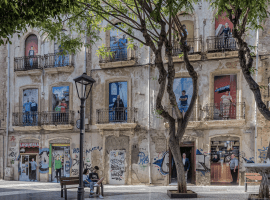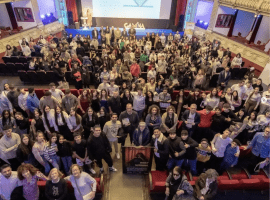CAMINA has been an initiative with a sound focus on the social and cultural integration of the people in the fringes living in three target neighbourhoods of Almeria, Almedina, La Chanca-Pescaderia and the Centre. Those neighbourhoods represent the splendour past of the ancient Almeria: here is where the cultural heritage of Almeria is more visible. But, during the last centuries they were progressively abandoned by Almeria citizens, who preferred developing new settlements outside the historical city, and started to host marginalised communities (including migrants and Roma people).
The project was designed to overcome social barriers and segregation of the diverse communities living in the cultural heritage areas of Almeria by fostering participative cultural activities aimed at exploring the urban heritage areas, meeting people living there and bridging with the rest of the city. For doing that, CAMINA fostered a slow participatory approach promoting cultural walking inside the target neighbourhoods of Almedina, La Chanca-Pescaderia and the Centre. Indeed the project was called “CAMINA” because in Spanish it means “WALK”. The project developed a “Cultural Circular Route” that is a cultural urban walk through cultural heritage sites, “cultural nodes” and significant landscape points of view.
The methodology of the “Cultural Circular Route” developed an itinerary based on the main concepts collected by the “Novel Collective Narrative” of Almeria. The narrative, created through the methodology of Story bank embracing official history and people’s stories, drawed a common Cultural Landscape connecting feelings, needs, people, neighbourhoods, city imagination, future, present and past of Almería.
The concept of the Cultural circular route to connect the three target neighbourhoods with the rest of the city evolved into the idea of “Almeria - Open-Air City Museum” where tangible and intangible heritage are showcased through cultural activities.

























